Since the age of 13 or so, music has been an important part of my life. I have written about it for various places, including here, here, here, here and, um, here, but more than that, I listen to music that I don’t have to write about pretty much every day.
I was going to write something about my favourite songs or whatever (and may do still), but thinking about it made me tune into the music that plays in my head, almost constantly and seemingly involuntarily, as the general background to my day. Involuntarily, because when tuned into, it becomes obvious that quite a bit of it is stuff that I wouldn’t necessarily listen to at all. Trying to keep track of the music of your mind is difficult though, because as soon as one focuses on it, one begins to/you begin to – that is, in my case I begin to influence it. Even when it is music that you like and listen to by choice, it’s rarely anything that seems specific to the present moment in a movie soundtrack kind of way – at the moment for instance, it’s Deirdre by the Beach Boys. It’s January (cue January by Pilot – sometimes the conscious mind and/or context does influence these things), so not really a season associated with the Beach Boys, I’m not especially in a Beach Boys kind of mood, I don’t know anyone called Deirdre; but the subconscious mind has determined that that’s what we are playing right now. Playing, but also listening to; it’s peculiar when you think about it.
Though the trombone on Deirdre (which I love) prevents it from being a “cool” choice, this could of course be an opportunity to display cooler-than-thou hipsterism, but as you’ll see in the (mostly DON’T) playlist below, lack of conscious control seems to equate to lack of quality control too. With that in mind, I won’t include things that popped into my head fleetingly, like the immortal Everybody Gonfi Gon by 2 Cowboys or jingles from advertisements by Kwik Fit (or, more locally, Murisons, whatever that is/was). Not that the songs below have all appeared in their entirety – in some cases I don’t even know the whole song, in several I only know a few lines of the lyrics. So anyway, here – as comprehensively as I can make it – is what I have “heard” today, with notes where there’s anything to say and concluding thoughts at the end…
The 5th January 2023 being-playedlist – *warning* contains actual songs
Thank You for Being a Friend (Theme from the Golden Girls).
https://www.youtube.com/watch?v=HV7AXRABSng
I have no idea where this came from or why I should apparently be thinking of it, but it’s been a regular on the ‘playlist’ this week. I’ve noticed that some songs stay in rotation for a while, sometimes evolving along the way. A key feature of these kinds of songs is that the ‘voice’ your brain chooses for them and the lyrics etc might be quite different from the real ones, especially when it’s a song you don’t actually know the lyrics of. I haven’t seen The Golden Girls for decades, or heard the theme tune (I included the video without playing it), so this seems an especially odd one. But perhaps it’s an early morning thing; while writing this it occurred to me that the theme from Happy Days has been popping into my head in the shower a lot recently.
Wham! – Last Christmas
https://www.youtube.com/watch?v=E8gmARGvPlI
It feels like extremely bad taste to be subjected to one of my least favourite festive songs, after Christmas, especially since I seem to have successfully avoided this one last year – but oh well, something in the Golden Girls theme apparently suggests it, since they tend to occur together.
Frank Sinatra – Young At Heart
https://www.youtube.com/watch?v=aZRn4auk4PQ
I’ve never intentionally listened to this song, but I guess it’s part of “the culture.” But at least it’s less mysterious than the Golden Girls theme; on my early morning walk there’s a creaky gate that makes a note that somehow puts this song in my mind, though it took me a few days to realise that’s what was happening.
Magnum – Just Like an Arrow
https://www.youtube.com/watch?v=BJeLByGsOGo
I like this song – and cheesy 80s Magnum generally – a lot, but it’s another one I haven’t intentionally listened to for a long time. Maybe this is my brain’s way of telling me to revisit it?
Jim Diamond – Hi Ho Silver
https://www.youtube.com/watch?v=p6mjSAgxusM
Still stuck in the 80s, but this time in the company of a song I loathe and detest; why brain, why? Isn’t this another one that’s TV-related in some way? John Logie Baird has a lot to answer for, clearly
Men at Work – Down Under
https://www.youtube.com/watch?v=XfR9iY5y94s
*Still* in the 80s, but at least it’s a song I don’t dislike. I’m not sure if I’ve ever deliberately listened to this song (you didn’t need to “back in the day”, you heard it everywhere) but it’s been a regular visitor to my brain for many years. There was even a harrowing few weeks (or months – it seemed like a long time) – when it formed a weird medley in my mind with Paul Simon’s Call Me Al (one of the few of his songs I actually dislike). Except that Call me Al had different lyrics at various points. I remember that the flute (recorder?) part of Down Under came in just after the last line of the chorus. Since that time, whenever I’ve heard that song I’ve been half-surprised that the segue doesn’t happen.
The Supremes – Baby Love
https://www.youtube.com/watch?v=ZAWSiWtUK2s
https://www.youtube.com/watch?v=ZAWSiWtUK2s
At least most of these are cheerful songs I guess? This one always makes me think of that objectively quite strange scene in Quentin Tarantino’s (in my opinion) best movie by miles, Jackie Brown
Mull Historical Society – Barcode Bypass
https://www.youtube.com/watch?v=StWYuUbl4M8
https://www.youtube.com/watch?v=StWYuUbl4M8
Oh well, they can’t all be cheerful. I’m guessing the opening line “let me get my gloves/and walk the dogs for miles” has something to do with the inclusion of this one. I like it, but the weary melancholy is not at all the mood of most of these.
Slayer – Raining Blood
https://www.youtube.com/watch?v=Gy3BOmvLf2w
https://www.youtube.com/watch?v=Gy3BOmvLf2w
???Why not, I suppose?
King Crimson – Fallen Angel
https://www.youtube.com/watch?v=eLlmbCkb3As
https://www.youtube.com/watch?v=eLlmbCkb3As
Mysterious: I like bits and pieces of King Crimson but I’m surprised to find that I know this song at all, since I don’t even own the album it’s on (Red, 1974) or any compilations etc. I wonder how I know it? I had to look it up from a fragment of lyric that I knew, but sure enough, it’s Fallen Angel. I thought the only song of that title that I knew was the arguably superior one by Poison, but that’s an argument for another day
Souls of Mischief – ’93 ‘Til Infinity
https://www.youtube.com/watch?v=fXJc2NYwHjw
https://www.youtube.com/watch?v=fXJc2NYwHjw
What this has to do with anything is anyone’s guess; I like it, it’s a classic and all, but I think I heard an alarm of some kind in the distance that somehow morphed into that noise in the background during the “Dial the seven digits” bit. But more importantly, is Tajai really wearing a cricket jumper? And if so, how come he looks cool doing so?
Which brings us up to date and Deirdre: but what other wonders lie ahead?
The Beach Boys – Deirdre
https://www.youtube.com/watch?v=IsDYy1l6TQU
https://www.youtube.com/watch?v=IsDYy1l6TQU
Conclusion: Hm. I don’t know: the subconscious mind is almost a separate entity with different and broader tastes than its conscious host? Or it has a masochistic streak? Or absorbing decades of unwanted stimuli from pop culture means that there has to be a continual processing (with some regrettable but hopefully harmless leakage) in order to function in any kind of normal, rational way, like an overspilling of the dream state into the waking one? Or maybe the brain is constantly making observations and connections that are necessary for its normal functioning (things like intuition and mood) but which the conscious brain has little or no access to except in this oblique way. A lot of this stuff is from the 80s, when I was growing up and absorbing knowledge etc: whatever; being human is strange sometimes. Hope you’re enjoying whatever your brain is treating you to today!
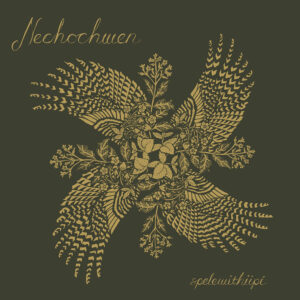 I loved Nechochwen’s Heart of Akamon and was quite shocked to find it’s now a decade old. They’ve released good music since then, notably a split album with Panopticon, but spelewithiipi (catchy name!) really reminded me of just how much I loved Heart of Akamon. For those who haven’t come across them, Nechochwen are an acoustic dark folk band (sometimes including metal elements, I kind of prefer when they don’t but it’s all good) that explores (as they put it) ‘the indigenous roots and history of the Upper Ohio River Valley.’ Their music is autumnal and haunting, and I love the imagery too. spelewithiipi is a beautiful album, and it’ll sound even better later in the year.
I loved Nechochwen’s Heart of Akamon and was quite shocked to find it’s now a decade old. They’ve released good music since then, notably a split album with Panopticon, but spelewithiipi (catchy name!) really reminded me of just how much I loved Heart of Akamon. For those who haven’t come across them, Nechochwen are an acoustic dark folk band (sometimes including metal elements, I kind of prefer when they don’t but it’s all good) that explores (as they put it) ‘the indigenous roots and history of the Upper Ohio River Valley.’ Their music is autumnal and haunting, and I love the imagery too. spelewithiipi is a beautiful album, and it’ll sound even better later in the year. Ghost World have made some of my favourite albums; I was immediately smitten with their 2017 debut album, which was my album of the year that year and at first the 2018 follow-up, Spin was disappointing to me, but ultimately went on to be one of my all-time (so far) favourite albums, so there’s some kind of lesson there. Anyway, Armadillo Café is an odd, whimsical but lovely concept album that so far is taking longer for me to absorb, but it’s full of good tunes and I’m confident that I’ll end up loving it without even noticing again.
Ghost World have made some of my favourite albums; I was immediately smitten with their 2017 debut album, which was my album of the year that year and at first the 2018 follow-up, Spin was disappointing to me, but ultimately went on to be one of my all-time (so far) favourite albums, so there’s some kind of lesson there. Anyway, Armadillo Café is an odd, whimsical but lovely concept album that so far is taking longer for me to absorb, but it’s full of good tunes and I’m confident that I’ll end up loving it without even noticing again.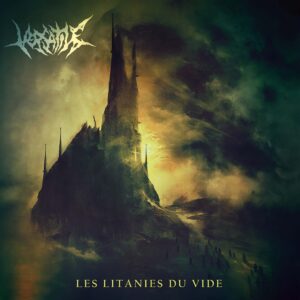 Hmm. I gave this a go because, despite the fact that industrial metal is one of my least favourite genres of music in the world, Swiss black metal has a special place in my heart and LADLO is a very dependable label. And..? Well, not exactly my cup of tea, but it’s good, there’s a nice chaotic, noisy atmosphere and it reminded me at times of Abigor (who I do like) and Blacklodge (who I occasionally like). The atmospheres and the choral bits are really cool and the noisy stuff with sirens etc is impressively alarming, though not nice if you have a headache.
Hmm. I gave this a go because, despite the fact that industrial metal is one of my least favourite genres of music in the world, Swiss black metal has a special place in my heart and LADLO is a very dependable label. And..? Well, not exactly my cup of tea, but it’s good, there’s a nice chaotic, noisy atmosphere and it reminded me at times of Abigor (who I do like) and Blacklodge (who I occasionally like). The atmospheres and the choral bits are really cool and the noisy stuff with sirens etc is impressively alarming, though not nice if you have a headache.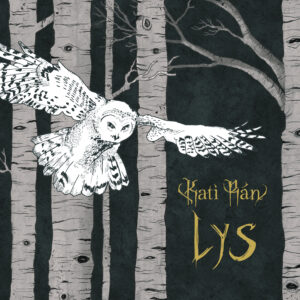
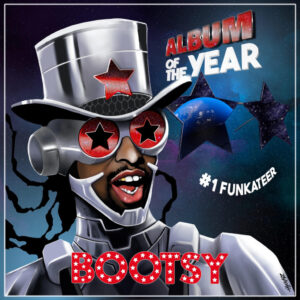 I reviewed this for Spectrum Culture so won’t say much about it here, but in these tense and miserable times, Bootsy’s indefatigable enthusiasm and uplifting silliness are more welcome than ever. Plus it’s just a really good album. The man’s a genius.
I reviewed this for Spectrum Culture so won’t say much about it here, but in these tense and miserable times, Bootsy’s indefatigable enthusiasm and uplifting silliness are more welcome than ever. Plus it’s just a really good album. The man’s a genius.




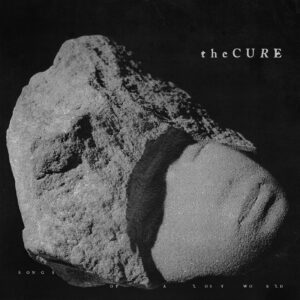
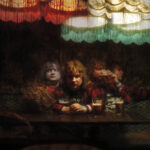 Henrik Palm – Nerd Icon (Svart Records) – sort of 80s-ish, sort of metal-ish, 100% individual
Henrik Palm – Nerd Icon (Svart Records) – sort of 80s-ish, sort of metal-ish, 100% individual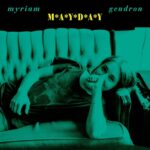 Myriam Gendron – Mayday (Feeding Tube) – I loved Not So Deep as a Well ten years ago (mentioned in passing
Myriam Gendron – Mayday (Feeding Tube) – I loved Not So Deep as a Well ten years ago (mentioned in passing  Ihsahn – Ihsahn (Candlelight) – wrote about it
Ihsahn – Ihsahn (Candlelight) – wrote about it  One of my top 3 or 4 albums of all time, John Cale’s Paris 1919 was reissued this year, his latest POPtical Illusion was good too
One of my top 3 or 4 albums of all time, John Cale’s Paris 1919 was reissued this year, his latest POPtical Illusion was good too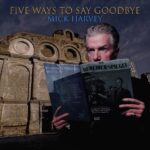 Mick Harvey – Five Ways to Say Goodbye (Mute) – lovely autumnal album by ex-Bad Seed and musical genius, more
Mick Harvey – Five Ways to Say Goodbye (Mute) – lovely autumnal album by ex-Bad Seed and musical genius, more 
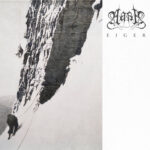 Aara –
Aara –  Claire Rousay –
Claire Rousay – 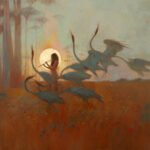 Alcest – Chants de L’Aurore (Nuclear Blast) – seems so long ago that I almost forgot about it, but this was (I thought) the best Alcest album for years, beautiful, wistful and generally lovely. I talked to Neige about it at the time, I should post that interview here at some point!
Alcest – Chants de L’Aurore (Nuclear Blast) – seems so long ago that I almost forgot about it, but this was (I thought) the best Alcest album for years, beautiful, wistful and generally lovely. I talked to Neige about it at the time, I should post that interview here at some point!

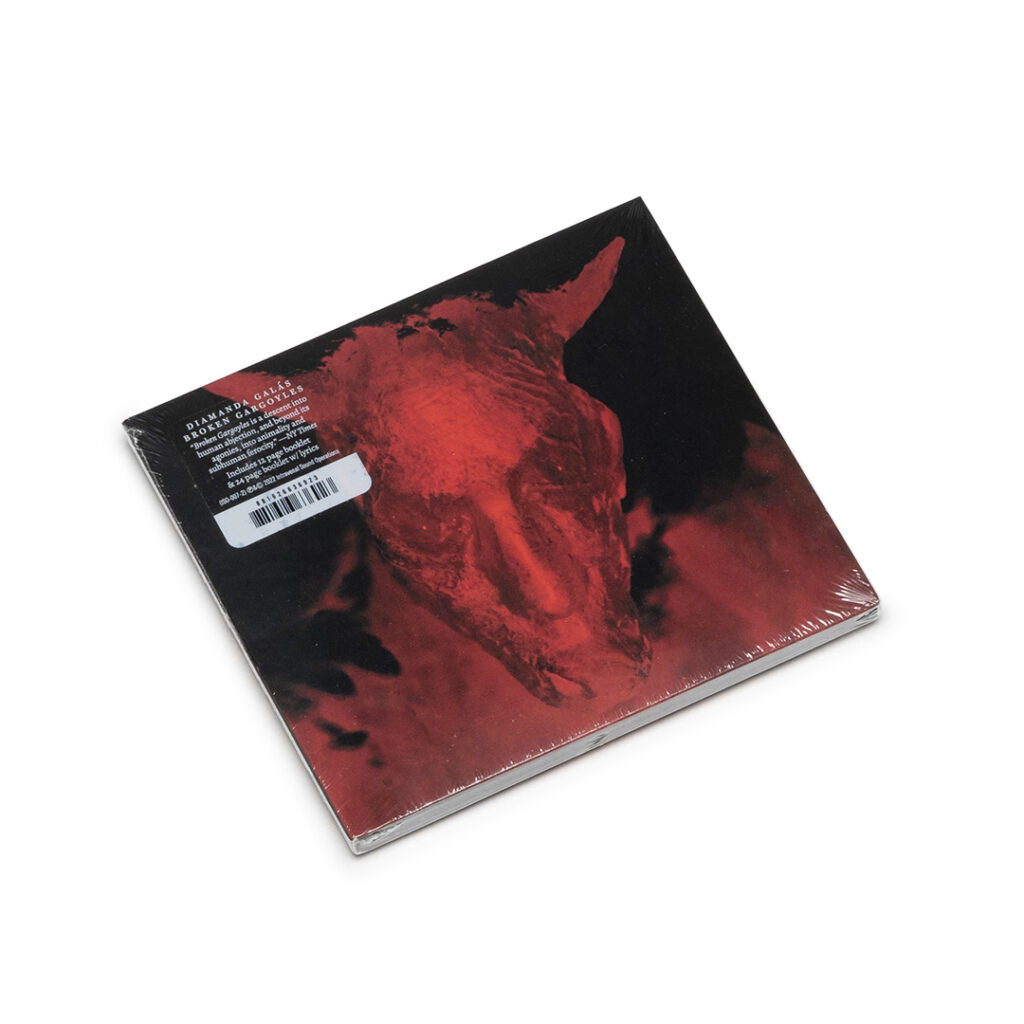
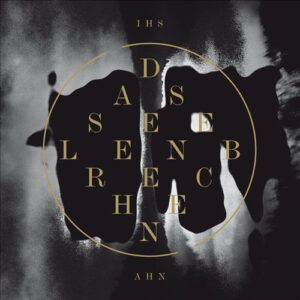 My favourite album of that year was Ihsahn’s Das Seelenbrechen, and it’s still one of my favourite albums. I rarely listen to it all the way through at the moment, but various tracks, such as Pulse, Regen and NaCL are still in regular rotation
My favourite album of that year was Ihsahn’s Das Seelenbrechen, and it’s still one of my favourite albums. I rarely listen to it all the way through at the moment, but various tracks, such as Pulse, Regen and NaCL are still in regular rotation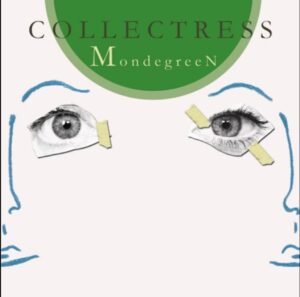 My favourite album of 2014 was
My favourite album of 2014 was My album of 2015 was Life is a Struggle, Give Up by
My album of 2015 was Life is a Struggle, Give Up by 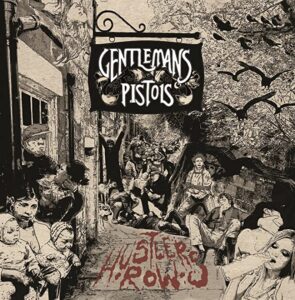
 I wouldn’t necessarily say I was aware of it at the time, but 2016 was a great year for music. My album of the year was Wyatt at the Coyote Palace by Kristin Hersh (which I enthused about
I wouldn’t necessarily say I was aware of it at the time, but 2016 was a great year for music. My album of the year was Wyatt at the Coyote Palace by Kristin Hersh (which I enthused about
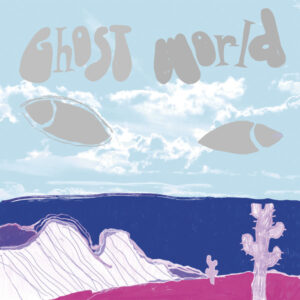 2017 had fewer standouts for me but my album of the year, the self-titled debut by Finnish alt-rock band Ghost World, which I wrote enthusiastically about
2017 had fewer standouts for me but my album of the year, the self-titled debut by Finnish alt-rock band Ghost World, which I wrote enthusiastically about  I was hugely surprised in 2018 to find that my album of the year was an electronic one,
I was hugely surprised in 2018 to find that my album of the year was an electronic one,  In 2019, I loved another Collectress album, Different Geographies but it didn’t replace or match Mondegreen in my affections. I can’t seem to find my album of the year strangely, but it might well have been Youth in Ribbons by Revenant Marquis, still my favourite of that prolific artist’s releases.
In 2019, I loved another Collectress album, Different Geographies but it didn’t replace or match Mondegreen in my affections. I can’t seem to find my album of the year strangely, but it might well have been Youth in Ribbons by Revenant Marquis, still my favourite of that prolific artist’s releases.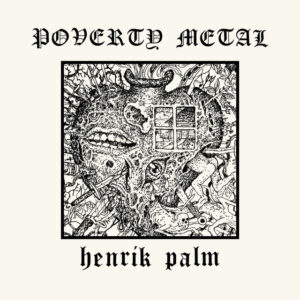
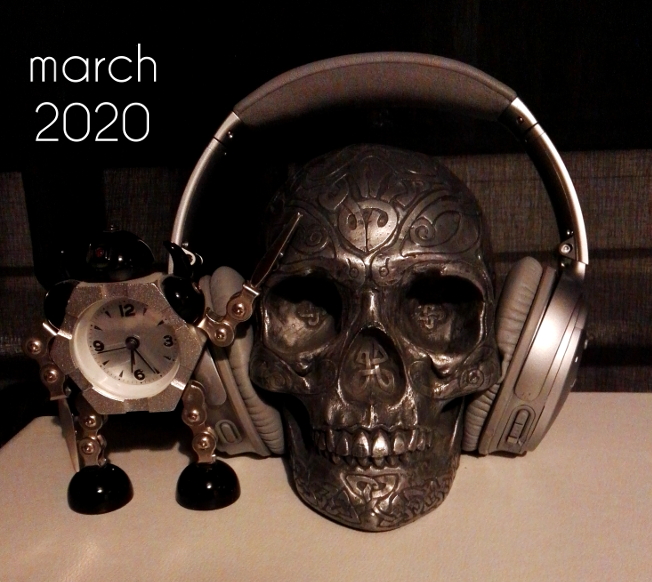

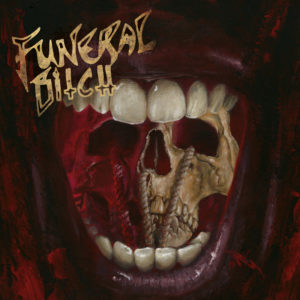 A foolish name, you might think; and yet there have been no less than three different bands called Funeral Bitch. This is the first and best of the three, the one formed by Paul Speckmann in 1986-8 between different incarnations of the much better known Master. Funeral Bitch were much in the same vein; extremely fast and rough (though still anthemic) death/thrash, with Speckmann’s hoarse bellowing a bit too prominent in the thin mix. That said, the demos are imbued with a real raw vitality that could arguably have been lost with the kind of production favoured by the big-name thrash bands of the era. It’s a real time capsule of the more extreme end of the 80s thrash scene and there’s a fair amount of intentional silliness too; a key but often forgotten feature of era. Interestingly, the guitarist is Alex Olvera, better known for his tenure as bassist with mid-level speed metal band Znöwhite around the same time. Only essential for Master fans, but generally fun, even if the live tracks are (appropriately) ‘rough as guts’ as they say down under.
A foolish name, you might think; and yet there have been no less than three different bands called Funeral Bitch. This is the first and best of the three, the one formed by Paul Speckmann in 1986-8 between different incarnations of the much better known Master. Funeral Bitch were much in the same vein; extremely fast and rough (though still anthemic) death/thrash, with Speckmann’s hoarse bellowing a bit too prominent in the thin mix. That said, the demos are imbued with a real raw vitality that could arguably have been lost with the kind of production favoured by the big-name thrash bands of the era. It’s a real time capsule of the more extreme end of the 80s thrash scene and there’s a fair amount of intentional silliness too; a key but often forgotten feature of era. Interestingly, the guitarist is Alex Olvera, better known for his tenure as bassist with mid-level speed metal band Znöwhite around the same time. Only essential for Master fans, but generally fun, even if the live tracks are (appropriately) ‘rough as guts’ as they say down under. Kariti is a Russian-Italian singer of dark folk music and, after an extremely peculiar and archaic-sounding voices-only intro, Covered Mirrors becomes an album of moody semi-acoustic songs which are not especially folk-sounding, but are very pretty indeed. The guitar sound is crisp and almost tangible, and the vocals (mainly in English) are clear and mournful, as befits the album’s themes of ‘death and parting’. It’s a beautifully grave and austere record, with an intimate quality that (especially through headphones) brings the listener extremely close to the performance, while remaining emotionally remote and unreachable: a perfect album for a time of quarantine, if not one that will cheer anyone up.
Kariti is a Russian-Italian singer of dark folk music and, after an extremely peculiar and archaic-sounding voices-only intro, Covered Mirrors becomes an album of moody semi-acoustic songs which are not especially folk-sounding, but are very pretty indeed. The guitar sound is crisp and almost tangible, and the vocals (mainly in English) are clear and mournful, as befits the album’s themes of ‘death and parting’. It’s a beautifully grave and austere record, with an intimate quality that (especially through headphones) brings the listener extremely close to the performance, while remaining emotionally remote and unreachable: a perfect album for a time of quarantine, if not one that will cheer anyone up. Alternately really great and very silly indeed, the sci-fi theme/concept behind Space Goretex sometimes gets in the way of the music. At its best the marriage of the unusual (but mostly surprisingly low key) musical textures of
Alternately really great and very silly indeed, the sci-fi theme/concept behind Space Goretex sometimes gets in the way of the music. At its best the marriage of the unusual (but mostly surprisingly low key) musical textures of 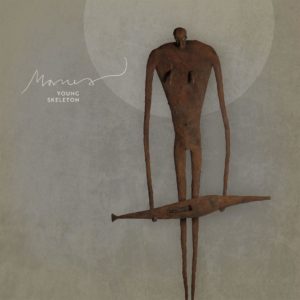 Always a surprise to find that non-mainstream musicians still release singles, but that’s what Manes are doing; and, like their last album, the superb Slow Motion Death Sequence it’s black metal in feeling only; musically the title track is a kind of eccentric and brooding widescreen gothic rock (I guess; it reminded me a bit of the Planet Caravan type early Black Sabbath ballads and musically but definitely not vocally a little bit of Fields of the Nephilim; there’s no electronic element on this one). It’s beautifully recorded, the title track warm and limpid but with an undertone of unease that builds throughout. The B side (is that still what it is for a digital release?) is Mouth of the Volcano, an atmospheric doomy semi-electronic chug built around a strangely familiar spoken word section that can’t place and featuring Asgeir Hatlan (last heard in Manes on 2014’s Be All, End All) and some spooky Diamanda Galas-ish vocals from Anna Murphy (ex-Eluveitie) and Ana Carolina Skaret. An unsettling but very listenable pair of songs and so a single worth releasing; and with beautiful artwork too.
Always a surprise to find that non-mainstream musicians still release singles, but that’s what Manes are doing; and, like their last album, the superb Slow Motion Death Sequence it’s black metal in feeling only; musically the title track is a kind of eccentric and brooding widescreen gothic rock (I guess; it reminded me a bit of the Planet Caravan type early Black Sabbath ballads and musically but definitely not vocally a little bit of Fields of the Nephilim; there’s no electronic element on this one). It’s beautifully recorded, the title track warm and limpid but with an undertone of unease that builds throughout. The B side (is that still what it is for a digital release?) is Mouth of the Volcano, an atmospheric doomy semi-electronic chug built around a strangely familiar spoken word section that can’t place and featuring Asgeir Hatlan (last heard in Manes on 2014’s Be All, End All) and some spooky Diamanda Galas-ish vocals from Anna Murphy (ex-Eluveitie) and Ana Carolina Skaret. An unsettling but very listenable pair of songs and so a single worth releasing; and with beautiful artwork too.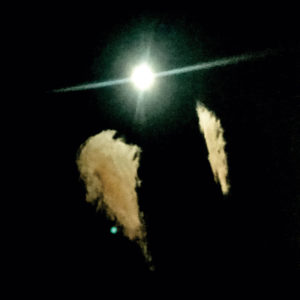 More solemn, downbeat but mostly very pretty music. I had never heard Midwife (the solo project of Madeline Johnston) before; on this album at least, it’s a bare, guitar-based sound with some ambient electronic elements, sort of shoegaze-y but not. The nearest comparison I can think of (not that anyone asked for one) is Codeine circa Frigid Stars. Forever was inspired by the unexpected loss of a friend and the music is as fragile and mournful as you’d expect. The sound is warm, clear and intimate-sounding – aside from the vocals, which are distanced by a strange spacey, reverb effect; perhaps for the best as the raw emotion is rendered slightly remote and universal, rather than immediate and personal. It’s clearly not an album for all moods: although the closing track S.W.I.M. speeds up to a Jesus and Mary Chain-esque plod, Forever is consistently slow and elegiac and nothing really lifts it out of its furrow of sadness: but beautiful for all that.
More solemn, downbeat but mostly very pretty music. I had never heard Midwife (the solo project of Madeline Johnston) before; on this album at least, it’s a bare, guitar-based sound with some ambient electronic elements, sort of shoegaze-y but not. The nearest comparison I can think of (not that anyone asked for one) is Codeine circa Frigid Stars. Forever was inspired by the unexpected loss of a friend and the music is as fragile and mournful as you’d expect. The sound is warm, clear and intimate-sounding – aside from the vocals, which are distanced by a strange spacey, reverb effect; perhaps for the best as the raw emotion is rendered slightly remote and universal, rather than immediate and personal. It’s clearly not an album for all moods: although the closing track S.W.I.M. speeds up to a Jesus and Mary Chain-esque plod, Forever is consistently slow and elegiac and nothing really lifts it out of its furrow of sadness: but beautiful for all that.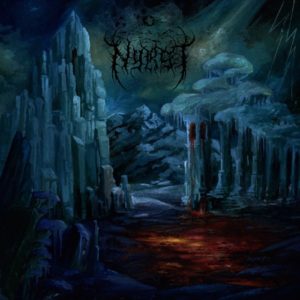 More black metal, this time from Iceland. Pretty standard (in a good way), polished but not symphonic black metal, modern but very much influenced by the classic Scandinavian bands (maybe more the second-and-a-half wave, like Kampfar than the classic Mayhem-Darkthrone-Burzum axis) it’s all very well put together and has plenty of muscle and melody. Two things save it from just being yet more (and there is a lot of it) proficient ‘grim & frostbitten’ black metal – firstly, some strange and very Icelandic anthemic moments; I say very Icelandic only because those moments remind me a bit of some of the epic, windswept bits in Solstafir’s music. Although recommended by the label for fans of fellow Icelanders Misþyrming, Nyrst, though inhabiting more or less the same kind of sub-genre, definitely have their own sound and style. (I highly recommend Misþyrming’s
More black metal, this time from Iceland. Pretty standard (in a good way), polished but not symphonic black metal, modern but very much influenced by the classic Scandinavian bands (maybe more the second-and-a-half wave, like Kampfar than the classic Mayhem-Darkthrone-Burzum axis) it’s all very well put together and has plenty of muscle and melody. Two things save it from just being yet more (and there is a lot of it) proficient ‘grim & frostbitten’ black metal – firstly, some strange and very Icelandic anthemic moments; I say very Icelandic only because those moments remind me a bit of some of the epic, windswept bits in Solstafir’s music. Although recommended by the label for fans of fellow Icelanders Misþyrming, Nyrst, though inhabiting more or less the same kind of sub-genre, definitely have their own sound and style. (I highly recommend Misþyrming’s  And another one-woman folk project. Ols (Polish singer and multi-instrumentalist Anna Maria Oskierko) is very different from Kariti though, and Widma is a primitive, ritualistic sounding album with none of Covered Mirrors‘s accessible, almost pop sheen. Widma does sound traditional, but it’s more akin to Wardruna and the archaeological end of pagan folk music than the glossy Clannad-ish kind recently heard on the latest Myrkur album. This is, by contrast, pleasantly droning and primal (and in that respect reminds me of an album I bought via MySpace many years ago by
And another one-woman folk project. Ols (Polish singer and multi-instrumentalist Anna Maria Oskierko) is very different from Kariti though, and Widma is a primitive, ritualistic sounding album with none of Covered Mirrors‘s accessible, almost pop sheen. Widma does sound traditional, but it’s more akin to Wardruna and the archaeological end of pagan folk music than the glossy Clannad-ish kind recently heard on the latest Myrkur album. This is, by contrast, pleasantly droning and primal (and in that respect reminds me of an album I bought via MySpace many years ago by 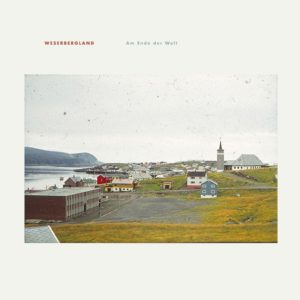 A contrast to everything else here, Norwegian collective Weserbergland’s second album consists of one 42 minute track, but it’s not the krautrock–influenced prog of their Can/Tangerine Dream-flavoured debut. Instead, it’s a chaotic but weirdly coherent kind of collage which consists of performances on conventional-ish instruments: guitar/strings/sax/turntables, cut up, messed about with and reassembled into a kind of melancholy, cinematic symphony. The strange, unpredictable stuttering percussion seems like it should disrupt the flow of the piece, but somehow the jerkiness becomes part of the mood and it all flows perfectly, if not in a straight line. It’s really not like anything else I’ve heard, but reminds me a little of Masahiko Satoh and the Soundbreakers’ 1971 classic avant-garde jazz-prog-whatever album Amalgamation in its sheer ear-defeating unclassifiable-ness. I’m sure it won’t go down in history as such, but this may be a definitively 2020 release.
A contrast to everything else here, Norwegian collective Weserbergland’s second album consists of one 42 minute track, but it’s not the krautrock–influenced prog of their Can/Tangerine Dream-flavoured debut. Instead, it’s a chaotic but weirdly coherent kind of collage which consists of performances on conventional-ish instruments: guitar/strings/sax/turntables, cut up, messed about with and reassembled into a kind of melancholy, cinematic symphony. The strange, unpredictable stuttering percussion seems like it should disrupt the flow of the piece, but somehow the jerkiness becomes part of the mood and it all flows perfectly, if not in a straight line. It’s really not like anything else I’ve heard, but reminds me a little of Masahiko Satoh and the Soundbreakers’ 1971 classic avant-garde jazz-prog-whatever album Amalgamation in its sheer ear-defeating unclassifiable-ness. I’m sure it won’t go down in history as such, but this may be a definitively 2020 release.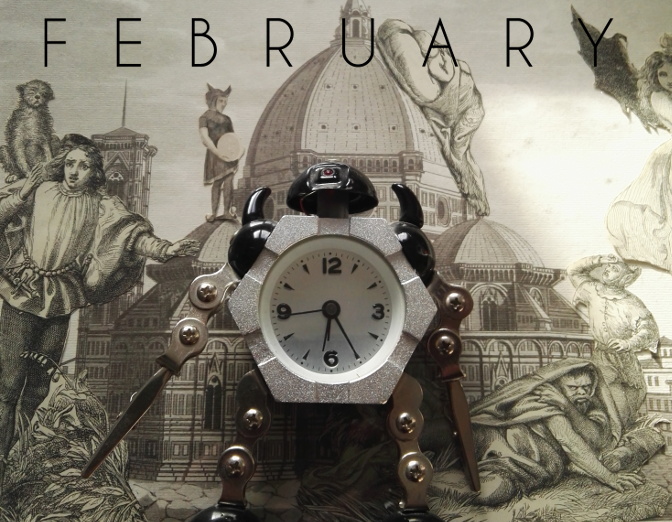
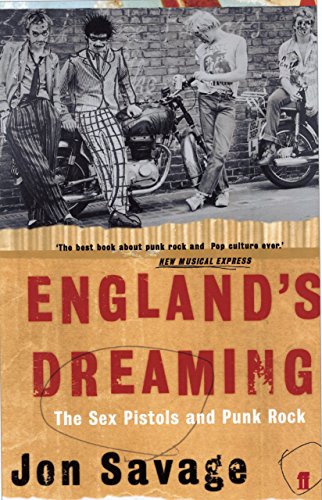 I just finished reading the newest edition* of Jon Savage’s brilliant England’s Dreaming which is as good as any music-related book I’ve ever read and made me realise how many parallels there are between now and the political situation in mid-70s Britain. Up to a point, that is. It would be hard, even I think for a conservative person, to see the victory of Johnson’s Tories as a return to some kind of sensible order in the way that deluded right wingers saw Thatcher’s victory – which did, it has to be said, render somewhat pointless the extreme right wing groups like the National Front & British Movement that had been growing in strength and influence throughout the decade. As with Johnson/the ERG and their wooing of the UKIP/nazi fanbase though, the reassurance that comes from seeing extremist groups losing popularity is soured (to put it mildly) by having people in charge who appeal to that demographic.
I just finished reading the newest edition* of Jon Savage’s brilliant England’s Dreaming which is as good as any music-related book I’ve ever read and made me realise how many parallels there are between now and the political situation in mid-70s Britain. Up to a point, that is. It would be hard, even I think for a conservative person, to see the victory of Johnson’s Tories as a return to some kind of sensible order in the way that deluded right wingers saw Thatcher’s victory – which did, it has to be said, render somewhat pointless the extreme right wing groups like the National Front & British Movement that had been growing in strength and influence throughout the decade. As with Johnson/the ERG and their wooing of the UKIP/nazi fanbase though, the reassurance that comes from seeing extremist groups losing popularity is soured (to put it mildly) by having people in charge who appeal to that demographic.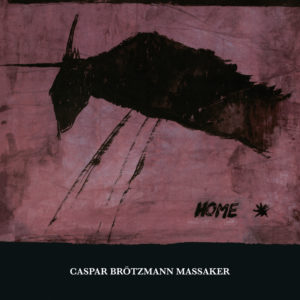 Sounding something like The Birthday Party playing noisy free jazz, the Massaker are a brutal guitar-bass-drums (with minimalist vocals) trio; heavy on feedback, tense dynamics and churning distortion, but sometimes almost groovy and (very) occasionally kind of pretty. Home was their fifth album and it’s pretty similar to the only other one of their albums that I know, The Tribe, from 1987. Squally, angular and dark but with insistent percussion, it’s a great palate-cleanser for your ears after too much pop music.
Sounding something like The Birthday Party playing noisy free jazz, the Massaker are a brutal guitar-bass-drums (with minimalist vocals) trio; heavy on feedback, tense dynamics and churning distortion, but sometimes almost groovy and (very) occasionally kind of pretty. Home was their fifth album and it’s pretty similar to the only other one of their albums that I know, The Tribe, from 1987. Squally, angular and dark but with insistent percussion, it’s a great palate-cleanser for your ears after too much pop music.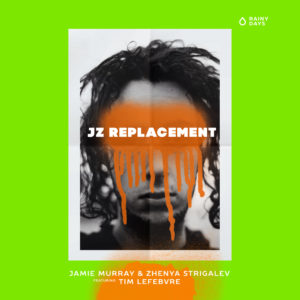
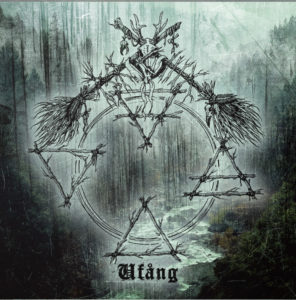 This Austrian black metal project has a very specific local (Tyrolean) focus, but judging by its Facebook page is the brainchild of Italian ex-pat Fabio D’Amore of symphonic power metal band Serenity; which makes sense – for all its atmospheric/folkish elements (there are some very nice jangly clean parts), this is a theatrical, musicianly album which feels epic and polished rather than dark and brutal. The band’s name refers to a pagan goddess, and throughout the album an odd, witchy narrator pops up declaiming or whispering, who I assume is the woman in the artwork, who the promotional material refers to as “the front woman [who] will sermonize, face-painted in historical black garb with embroidered belt and cast-iron broom …”
This Austrian black metal project has a very specific local (Tyrolean) focus, but judging by its Facebook page is the brainchild of Italian ex-pat Fabio D’Amore of symphonic power metal band Serenity; which makes sense – for all its atmospheric/folkish elements (there are some very nice jangly clean parts), this is a theatrical, musicianly album which feels epic and polished rather than dark and brutal. The band’s name refers to a pagan goddess, and throughout the album an odd, witchy narrator pops up declaiming or whispering, who I assume is the woman in the artwork, who the promotional material refers to as “the front woman [who] will sermonize, face-painted in historical black garb with embroidered belt and cast-iron broom …”
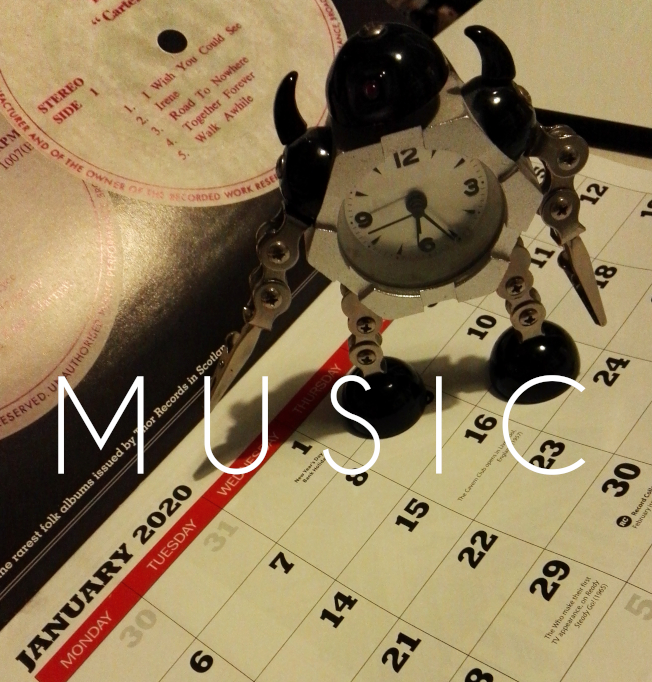
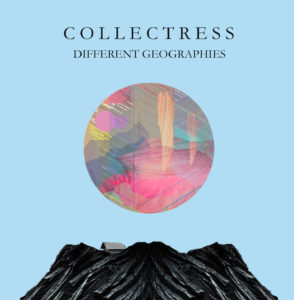

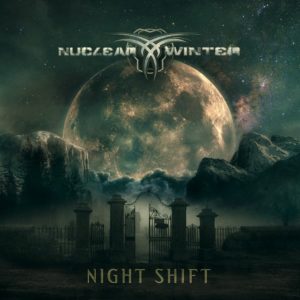
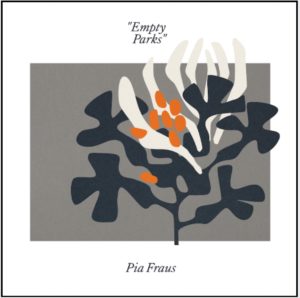

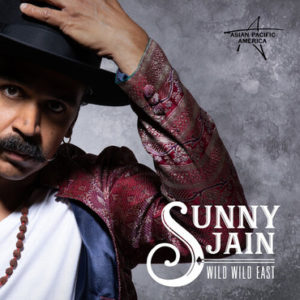
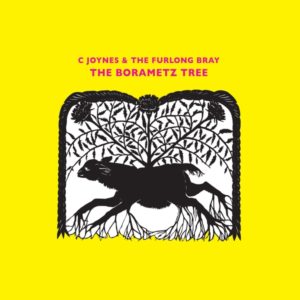
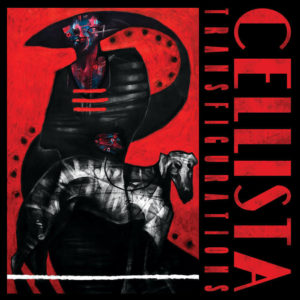
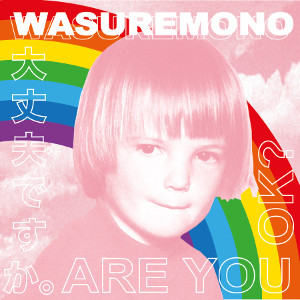

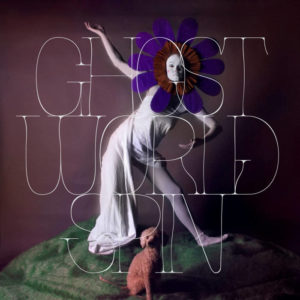

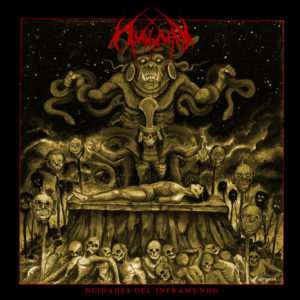
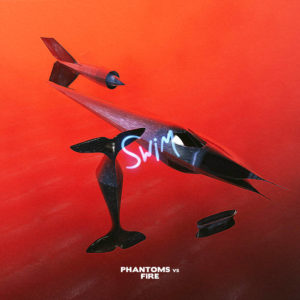


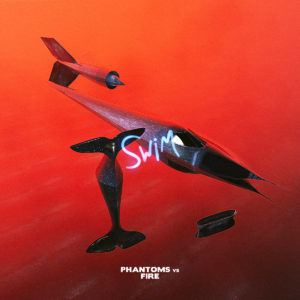
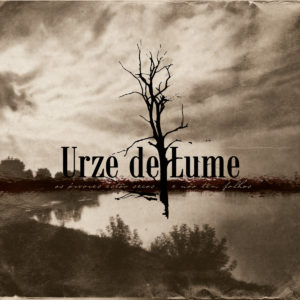
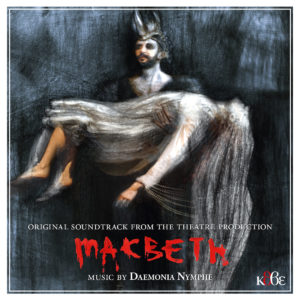
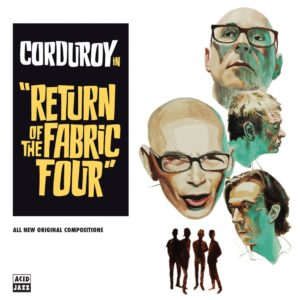
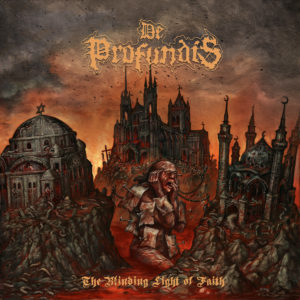 I am (as I think most people probably are!) quite fussy about death metal, but without being retro in any kind of self-conscious way, De Profundis make music that would sit happily in the late 80s/early 90s death metal scene. The Blinding Light of Faith is an album that can hold its own in the company of any of the big names of death metal; superb, intelligent musicianship and songwriting – it’s a seriously impressive album.
I am (as I think most people probably are!) quite fussy about death metal, but without being retro in any kind of self-conscious way, De Profundis make music that would sit happily in the late 80s/early 90s death metal scene. The Blinding Light of Faith is an album that can hold its own in the company of any of the big names of death metal; superb, intelligent musicianship and songwriting – it’s a seriously impressive album. 80s veteran(s) Lizzy Borden (both a singer and a band) seem always to suffer from being mis-pigeonholed, whether as a glam band (he/they did have the image), Twisted Sister clones (ditto), or some kind of Alice Cooper-esque horror-metal act (partly the name, partly the image innit), but if you listen back to the best of the band’s 80s work, especially Love You To Pieces, they were really a classic metal band, more Iron Maiden-meets-W.A.S.P. than Motley Crue. On the new album Lizzy himself takes centre stage, singing better than he ever has – no mean feat – and playing all the guitars on what is a very song-based album. It’s not very heavy – more a kind of homage to bands like Cheap Trick and Queen than the early 80s Lizzy Borden sound. But it’s really good if you like that kind of thing, and it’s great to hear Lizzy really going for it after a couple of slightly patchy, compromised-sounding, ‘not bad’ records.
80s veteran(s) Lizzy Borden (both a singer and a band) seem always to suffer from being mis-pigeonholed, whether as a glam band (he/they did have the image), Twisted Sister clones (ditto), or some kind of Alice Cooper-esque horror-metal act (partly the name, partly the image innit), but if you listen back to the best of the band’s 80s work, especially Love You To Pieces, they were really a classic metal band, more Iron Maiden-meets-W.A.S.P. than Motley Crue. On the new album Lizzy himself takes centre stage, singing better than he ever has – no mean feat – and playing all the guitars on what is a very song-based album. It’s not very heavy – more a kind of homage to bands like Cheap Trick and Queen than the early 80s Lizzy Borden sound. But it’s really good if you like that kind of thing, and it’s great to hear Lizzy really going for it after a couple of slightly patchy, compromised-sounding, ‘not bad’ records.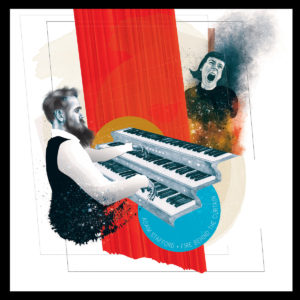 Away from metal, this is a really interesting, good album if you like – well, what? “Film soundtrack music” isn’t really a genre, is it, but that’s what Fire Behind The Curtain makes me think of. I’ve seen it described as neoclassical and minimalist too, but neither of those feels quite right to me. It’s a beautifully cohesive-yet-eclectic collection of mostly-instrumental pieces vary from haunting and bleakly forbidding atmospheres to warm and embracing melodies.
Away from metal, this is a really interesting, good album if you like – well, what? “Film soundtrack music” isn’t really a genre, is it, but that’s what Fire Behind The Curtain makes me think of. I’ve seen it described as neoclassical and minimalist too, but neither of those feels quite right to me. It’s a beautifully cohesive-yet-eclectic collection of mostly-instrumental pieces vary from haunting and bleakly forbidding atmospheres to warm and embracing melodies. I can’t really write an awful lot about this album from the always-dependable I Heart Noise label, as I’ve only just started listening to it really; but so far I love it. It makes me think of Lou Reed, or Alan Vega covering John Lennon’s Plastic Ono Band album; sparse, forlorn, world-weary and a little bit sleazy.
I can’t really write an awful lot about this album from the always-dependable I Heart Noise label, as I’ve only just started listening to it really; but so far I love it. It makes me think of Lou Reed, or Alan Vega covering John Lennon’s Plastic Ono Band album; sparse, forlorn, world-weary and a little bit sleazy.